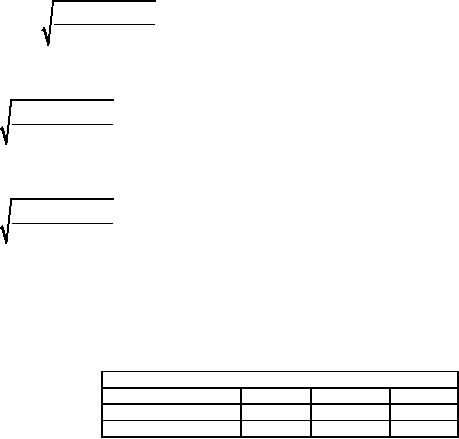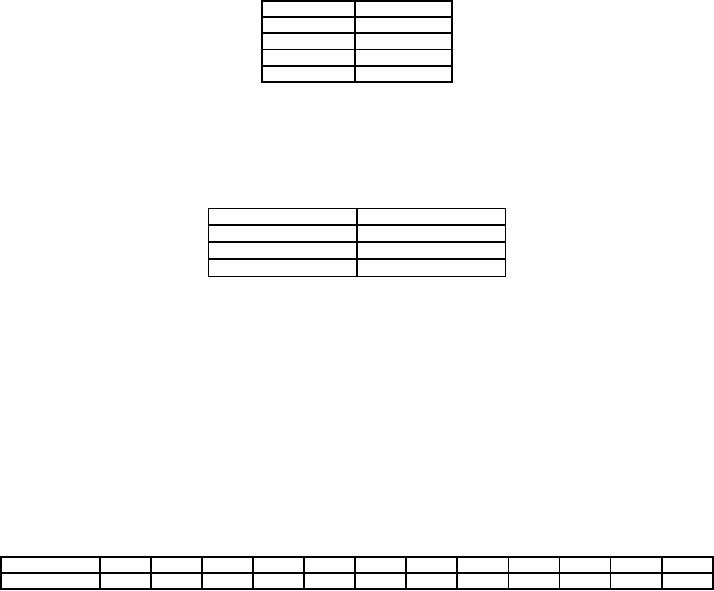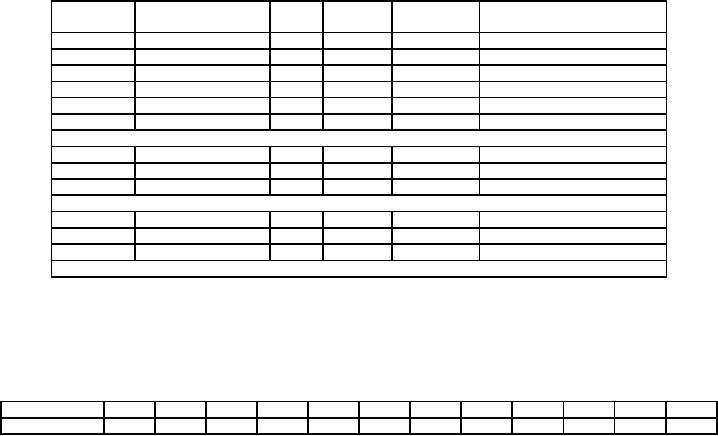 |
Inventory Control:ORDER QUANTITY WITH PRICE-BREAK |
| << Inventory Control:Manufacturing model with shortages |
| Inventory Control:SOME DEFINITIONS, Computation of Safety Stock >> |

Operations
Research (MTH601)
68
ORDER
QUANTITY WITH
PRICE-BREAK
The
concept of Economic Order
Quantity fails in certain
cases where there is a
discount offered when
purchases are
made
in large quantities. Certain
manufacturers offer reduced
rate for items when a
larger quantity is ordered. It
may
appear
that the inventory holding
cost may increase if large
quantities of items are
ordered. But if the discount
offered
is
so attractive that it even
outweighs the holding cost,
the probably the order at
levels other than the
EOQ would be
economical.
An illustration is given in the
following example and the
rationale is explained.
Example:
A company
uses 12000 items per
year supplied ordinarily at a
price of Rs. 3.00 per
item. Carrying costs
are
16% of the value of the
average inventory and the
ordering costs are Rs. 20
per order. The supplier
however
offers
discounts as per the table
below:
Order
size
Price
per item
Less
than 2000
Rs.
3.00
2000
to 3999
Rs.
290
4000
or more
Rs.
2.85
Compute
the economic order
size.
2
�12000
�
20
EOQ
=
=
1000
3.00
�
0.16
EOQ
at Rs. 2.90 per
item
2
�12000
�
20
=
=
1017
2.90
�
0.16
EOQ
at Rs. 2.85 per
item
2
�12000
�
20
=
=
1026
2.85
�
0.16
The
EOQ at Rs. 2.90 per
item = 1017. But the
price per item is Rs.
2.9 only if the items
are ordered in the range
of
2000
to 3999. This is therefore an
infeasible solution. Similarly
the EOQ at Rs. 2.85
per item is 1026. This
price is
valid
only for items ordered in
the range 4000 or more.
This is also an infeasible
solution.
We
follow the routine procedure
and calculate the cost
for various order sizes:
1000, 2000, 4000,
Order
size
1000
2000
4000
Item
cost (Rs.)
36000
34800
34200
Order
cost (Rs.)
240
120
60
Holding
cost (Rs.)
240
464
912
68

Operations
Research (MTH601)
69
Exercises
1.
Assume the following
price structure
Units
Units
Price
0-199
Rs.
10.00
200-399
9.75
400-599
9.50
600
9.25
Purchase
cost per order
=
Rs. 25
Cost
of the item
=
Rs. 10
Annual
demand
=
950 Units
Carrying
cost
=
Rs. 2/Unit/year
2.
Find the optimal
order quantity for a product
for which the price-breaks
are as follows:
Items
q
Price/Unit
0≤
Rs.
20
q
< 100
100
≤
Rs.
18
q
< 200
200
≤
Rs.
16
q
The
monthly demand for the
product is 600 units. The
storage cost is 15% of unit
cost and the
cost
of
ordering is Rs. 30 per
order.
DYNAMIC
ORDER QUANTITY
The
basic assumption in the
derivation of Economic Order
Quantity models discussed
previously is that
the
demand
is uniform. But in certain
situations the demand is not
uniform. It may rise and
fall, depending on
seasonal
influences.
A general method is discussed
below that can be applied to
any pattern of varying
demand due to
seasonal
or irregular variations.
Consider
the following example to
illustrate how a varying
demand problem can be
tackled. This is known
as
Dynamic
Order Quantity model.
Example:
The
requirements for 12 months
are given below:
Month
1
2
3
4
5
6
7
8
9
10
11
12
Requirement
20
40
10
10
10
2
40
30
40
40
10
20
Set
up cost
=
Rs. 20
Unit
price
=
Rs. 5 per item.
Interest
=
24% per year
or
2% per month.
Solution:
To calculate
the dynamic order quantity
we can adopt the following
procedure.
69

Operations
Research (MTH601)
70
The
first month's requirement
has to be ordered in the
first month itself at a
procurement cost of Rs. 20.
Now we
have
to decide whether the second
month's requirement can also
be ordered along with first
month's requirement.
This
involves additional carrying
cost, but this will
result in saving an extra
set up. Hence if the
saving on set up
costs
outweighs
the carrying costs, then we
include the second month's
requirements along with the
first month. Similarly
a
decision
can be taken whether to
include the third month's
requirement in the first
month itself. This procedure
is
followed
until the procurement costs
and carrying costs are
balanced.
Let
n
represent
the month, n
= 1, 2, ...,
12. Let Rn be
the requirement during
nth month
and Rn+1
be
the
requirement
during (n
+ 1)th
month. If the (n
+ 1)th
month requirement namely
Rn+1 is
absorbed in nth month
itself,
the
additional procurement cost is
saved.
Hence
the saving in procurement
cost is (C2/n).
But the additional carrying
cost is C3
n (Rn+1). If the
additional
carrying cost is less than
the procurement cost, then
the (n+1)th
month requirement is to be ordered
also
with
nth month.
Hence
we have to check
whether
n
Rn + 1 C3 < C2/n
n2
Rn + 1 <
C2/C3
If
the answer to the above
inequality is yes, then, the
future month's requirements
are included in the first
month itself.
If
the answer is 'no', then
that requirement is to be ordered
afresh and this is treated
as month
n
= 1. In
this
example
C2/C3 =
20/0.01 = 200. All the
eleven information can be
represented in the table as
shown.
n2Rn+1.
n
Is
Month.
Requirement.
Rn
2
n
Rn+1<200
Action.
1
20
1
40
Yes
include
40 in month 1
2
40
2
40
Yes
include
10 in month 1
3
10
3
90
Yes
include
10 in month 1
4
10
4
160
Yes
include
10 in month 1
5
10
5
50
Yes
include
2 in month 1
6
2
6
1440
No
set
up again in month 7
Total
92
7
40
1
30
Yes
include
10 in 7th month.
8
30
2
160
Yes
include
40 in 7th month.
9
40
3
360
No
set
up again in month 10
Total
110
10
40
1
10
Yes
include
10 in month 10
11
10
2
80
Yes
include
20 in month 10
12
20
Total
70
Hence
we order three times a year
in the first month, seventh
month and tenth month,
the batch sizes being
92, 110
and
70 respectively.
Exercise:
Compute
the dyanamic EOQ is for
the following
requirements.
Month
1
2
3
4
5
6
7
8
9
10
11
12
Requirement.
50
100
10
170
150
180
1
260
100
80
150
200
70

Operations
Research (MTH601)
71
ABC
ANALYSIS
The
ABC analysis is the analysis
that attracts management on
those items where the
greatest savings can
be
expected.
This is a simple but
powerful tool of statistical
sampling in the area of
inventory control or
materials
management.
In
this analysis, the items
are classified or categorized
into three classes, A, B and
C by their usage value. The
usage
value
is defined as,
The
ABC concept is based on
Pareto's law that few
high usage value items
constitute a major part of th
capital
invested
in inventories whereas a large
number of items having low
usage value constitute an
insignificant part of
the
capital.
It too much inventory is
kept, the ABC analysis
can be performed on a sample.
After obtaining the
random
sample
the following steps are
carried out for the
ABC analysis.
STEP
1: Compute
the annual usage value
for every item in the
sample by multiplying the
annual requirements by
the
cost per unit.
STEP
2: Arrange
the items in decending order
of the usage value
calculated above.
STEP
3: Make a
cumulative total of the
number of items and the
usage value.
STEP
4: Convert
the cumulative total of
number of items and usage
values into a percentage of
their grand totals.
STEP
5: Draw a
graph connecting cumulative %
items and cumulative % usage
value. The graph is
divided
approximately
into three segments, where
the curve sharply changes
its shape. This indicates
the three segments A,
B
and C.
The
class A items whose usage
values are higher are to be
carefully watched and are
under the strict and
continued
scrutiny
of the senior inventory
control staff. These items
should be issued only an
indents sanctioned by the
staff.
The
class C items on the other
extreme can be placed on the
shop floor and the
personnel can help
themselves
without
placing a formal requisition.
The class B items fall in
between A and C.
ABC
concept conforms to the
consideration implied in the
EOQ model. 'A' items
have high inventory
carrying
costs
and should therefore be
placed with EOQ concept.
The 'C' items require
very little capital and
have therefore
low
inventory carrying costs.
Hence, they can be purchased
in bigger lots. 'B' items
are usually placed
under
statistical
stock control.
Example:
Perform ABC analysis on the
following sample of 10 items
from an inventory.
Items
1
2
3
4
5
6
7
8
9
10
Annual
Usage
300
2700
30
1000
50
220
160
800
600
70
(Unit)
Unit
Cost
10
15
10
5
4
100
5
5
15
10
(Rs.)
Solution:
71
Table of Contents:
- Introduction:OR APPROACH TO PROBLEM SOLVING, Observation
- Introduction:Model Solution, Implementation of Results
- Introduction:USES OF OPERATIONS RESEARCH, Marketing, Personnel
- PERT / CPM:CONCEPT OF NETWORK, RULES FOR CONSTRUCTION OF NETWORK
- PERT / CPM:DUMMY ACTIVITIES, TO FIND THE CRITICAL PATH
- PERT / CPM:ALGORITHM FOR CRITICAL PATH, Free Slack
- PERT / CPM:Expected length of a critical path, Expected time and Critical path
- PERT / CPM:Expected time and Critical path
- PERT / CPM:RESOURCE SCHEDULING IN NETWORK
- PERT / CPM:Exercises
- Inventory Control:INVENTORY COSTS, INVENTORY MODELS (E.O.Q. MODELS)
- Inventory Control:Purchasing model with shortages
- Inventory Control:Manufacturing model with no shortages
- Inventory Control:Manufacturing model with shortages
- Inventory Control:ORDER QUANTITY WITH PRICE-BREAK
- Inventory Control:SOME DEFINITIONS, Computation of Safety Stock
- Linear Programming:Formulation of the Linear Programming Problem
- Linear Programming:Formulation of the Linear Programming Problem, Decision Variables
- Linear Programming:Model Constraints, Ingredients Mixing
- Linear Programming:VITAMIN CONTRIBUTION, Decision Variables
- Linear Programming:LINEAR PROGRAMMING PROBLEM
- Linear Programming:LIMITATIONS OF LINEAR PROGRAMMING
- Linear Programming:SOLUTION TO LINEAR PROGRAMMING PROBLEMS
- Linear Programming:SIMPLEX METHOD, Simplex Procedure
- Linear Programming:PRESENTATION IN TABULAR FORM - (SIMPLEX TABLE)
- Linear Programming:ARTIFICIAL VARIABLE TECHNIQUE
- Linear Programming:The Two Phase Method, First Iteration
- Linear Programming:VARIANTS OF THE SIMPLEX METHOD
- Linear Programming:Tie for the Leaving Basic Variable (Degeneracy)
- Linear Programming:Multiple or Alternative optimal Solutions
- Transportation Problems:TRANSPORTATION MODEL, Distribution centers
- Transportation Problems:FINDING AN INITIAL BASIC FEASIBLE SOLUTION
- Transportation Problems:MOVING TOWARDS OPTIMALITY
- Transportation Problems:DEGENERACY, Destination
- Transportation Problems:REVIEW QUESTIONS
- Assignment Problems:MATHEMATICAL FORMULATION OF THE PROBLEM
- Assignment Problems:SOLUTION OF AN ASSIGNMENT PROBLEM
- Queuing Theory:DEFINITION OF TERMS IN QUEUEING MODEL
- Queuing Theory:SINGLE-CHANNEL INFINITE-POPULATION MODEL
- Replacement Models:REPLACEMENT OF ITEMS WITH GRADUAL DETERIORATION
- Replacement Models:ITEMS DETERIORATING WITH TIME VALUE OF MONEY
- Dynamic Programming:FEATURES CHARECTERIZING DYNAMIC PROGRAMMING PROBLEMS
- Dynamic Programming:Analysis of the Result, One Stage Problem
- Miscellaneous:SEQUENCING, PROCESSING n JOBS THROUGH TWO MACHINES
- Miscellaneous:METHODS OF INTEGER PROGRAMMING SOLUTION